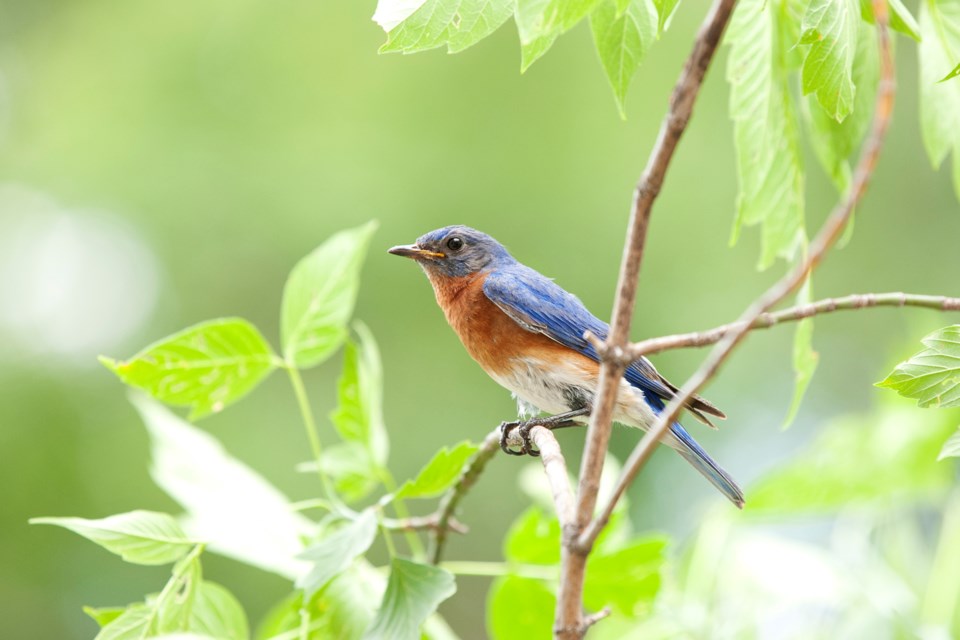NATURE CONSERVANCY OF CANADA — In spring, we welcome the return of migratory birds to Canada to breed. A few billion birds from over 400 species breed in Canada each year. Before we know it, young birds will be leaving their nests, awkwardly learning to navigate the world around them. Like me, you may enjoy watching them from your window.
One day, a couple of springs ago, I heard a thunk against my window and walked over to find a dazed and disoriented young bird wandering the grass below. This bird was lucky; it probably tried to fly off from the lawn where its siblings were foraging when it hit the window. It quickly recovered and flew off. But not all birds are so lucky.
Millions of birds die each year in collisions with buildings, especially during migration. But it doesn’t have to be this way. These collisions are entirely preventable with a little awareness and action. And the other major threats to birds are also entirely preventable.
There is little doubt that habitat loss is the greatest threat to birds, yet the overall impact of habitat loss on bird populations is difficult to measure. Other threats are easier to quantify. An estimated 269 million birds are killed, and two million nests are destroyed, in Canada every year from human-related activity according to . Of these, an estimated 196 million birds are killed annually by free-roaming cats (either domestic or feral). Collisions with houses, buildings, powerlines and vehicles account for 64 million deaths and pesticides for three million deaths annually.
How you can help support birds in your own backyard
- Keep your cat tethered while outdoors or build it an outdoor enclosure. Learn more about how to .
- Bird-proof your home’s windows by covering them with a pattern of markings. In total, 35 per cent of the collisions that birds have with human structures are from window strikes at homes; only three per cent of collisions happen with commercial buildings, while 40 per cent are with transmission lines and 21 per cent with vehicles. Birds do not understand that the trees and sky reflected in windows are not real. Examine your windows from different angles and at different times of day to determine if the reflection may pose a risk to birds. Learn more about and .
- Avoid using pesticides in your yard and, if you need to use them, please do so responsibly. Learn more about the .
- Plant native plants in your garden and yard that birds love. Rather than cleaning up your garden and yard in the fall, consider leaving plants over the winter for birds to enjoy as food and shelter. For example, waxwings and robins may feed on leftover berries, and chickadees and nuthatches may feed on sunflower seeds. Learn more about in Canada.
You can also get involved in bird conservation through or by supporting conservation groups that support birds or their habitats. For example, the Nature Conservancy of Canada protects many across the country. Also take some time to learn more about birds and their migration. The , and are great resources.
This spring, I hope you take the time the enjoy the marvel of migration and consider what you can do to support birds in your own backyard. I’ve learned from experience that many home windows are not bird safe and have since taken measures to ensure they are. With a little awareness and effort, our actions can go a long way to reducing the top threats to birds.
Learn more about the ways you can be for the birds in the Nature Conservancy of Canada's Small Acts of Conservation.www.natureconservancy.ca/smallacts
(Samantha Knight is national science manager with the Nature Conservancy of Canada)



